Seagrasses
What are seagrasses?
Seagrasses are submerged grass-like flowering plants that live in marine and estuarine waters. Seagrasses occur in protected bays and lagoons throughout Florida and also in deeper waters along the continental shelf in the Gulf of Mexico. The depth at which seagrasses occur is limited by water clarity because most species require high levels of light.
Benefits of seagrasses:
- They help maintain water clarity by trapping fine sediments and particles
- They stabilize the ocean bottom with their roots and rhizomes
- They provide habitat and nursery areas for fishes, crustaceans, and shellfish
- They are a main food source for many marine animals, including sea turtles and the endangered Florida manatee
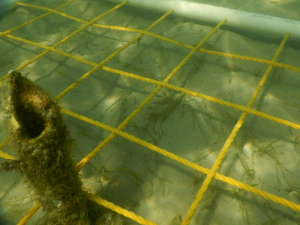
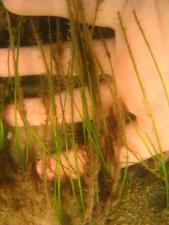
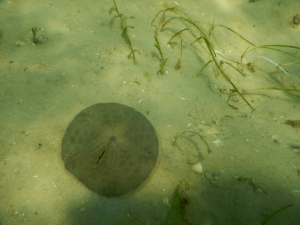
Seagrasses in Naples
Naples Bay has lost about 90% of its seagrass beds since 1950, and so it is crucial that the remaining seagrass beds are protected and habitat suitable for seagrass recruitment is restored. Seagrass beds in Naples Bay are monitored annually by scuba diving along underwater transects to assess seagrass density and species composition. The first graph below shows the percent cover within a m² of seagrass (H. wrightii) at fixed monitoring stations in Naples Bay, 2006-2019. The second graph below shows the density (number of shoots/m²) of seagrass (H. wrightii) in Naples Bay, 2006-2019.
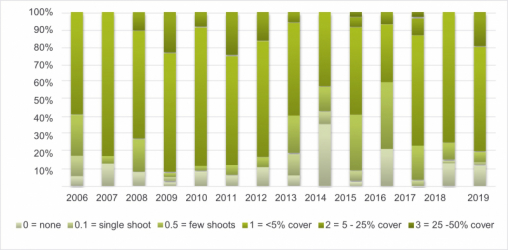

Damage to seagrass flats from boats is an increasing problem in Florida. Please follow these tips for boating in near-shore habitats:
- Familiarize yourself with the local waters where you plan to boat
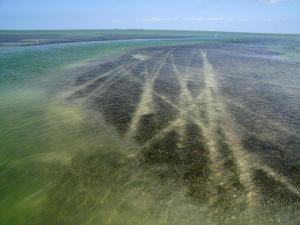
- Always use up-to-date nautical charts of the area
- Use marked channels where they exist and stay in deep water
- When in doubt about the depth, slow down and idle. Make sure the bow of the boat is down and the motor is trimmed or tilted up
- Keep track of the tides. The greatest range of tides (shallowest and deepest water) occurs during a full-moon and new-moon. Use extra caution when boating on a low tide
- If you do run into a seagrass flat, you will be leaving a sediment trail behind your boat, making the water murky and probably cutting seagrass roots. Stop immediately and tilt your engine
- Prop-dredging and seagrass scarring is an unnecessary impact to the natural resources that you can control
- Study your charts. Read the waters. Know your depth and draft.
For more information on seagrasses see:
